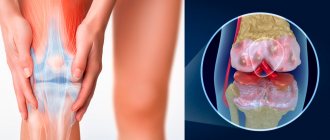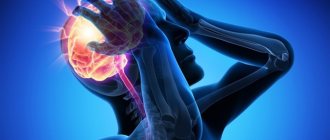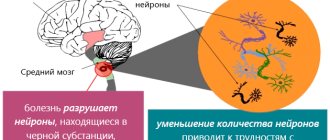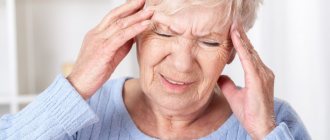What is dizziness?
True dizziness or vertigo is a condition during which patients have a feeling of rotation of surrounding objects around them or a false sensation of their own movement or rotation.
An example of true dizziness, but not in any way related to the disease, is the dizziness that appears in people after riding a carousel, when, after an abrupt stop, they continue to see the movement of surrounding objects relative to themselves, as if the carousel were still in motion.
In most cases, the occurrence of true dizziness is a symptom of diseases of the system of control of balance and body position in space. This system includes the eyes, the vestibular apparatus of the inner ear, and sensory receptors in the human muscles, joints, and bones. Very often, dizziness, which is caused by a disruption in the balance system, is accompanied by nausea and vomiting.
Types of dizziness
Depending on the cause of dizziness, the following types of condition are distinguished:
- central: associated with brain pathology;
- peripheral: occurs against the background of damage to the vestibular system or vestibular nerve.
Another classification option includes two types of dizziness:
- systemic: provoked by a failure in any of the systems responsible for orientation in space (visual, vestibular, proprioceptive); usually it seems to patients. that objects are spinning around them;
- non-systemic: caused by psychogenic reasons (stress, severe fatigue, hunger, etc.), usually not associated with a feeling of circular motion.
Make an appointment
Symptoms other than dizziness
As can be seen from the above, the term “dizziness” has a rather narrow medical interpretation (a false sensation of rotation of surrounding objects or one’s own rotation). But, despite this, people also use this term to refer to other symptoms that are not actually dizziness. So, most often “dizziness” is called such phenomena as:
- darkening in the eyes after abruptly rising to your feet from a sitting or lying position;
- a veil before the eyes;
- feeling of imminent loss of consciousness (fainting);
- weakness, nausea, feeling of confusion and unsteadiness in the legs;
- feeling of unsteady gait and impaired balance.
When a person suffering from dizziness comes to see a doctor, he should describe his condition, how he is feeling and the symptoms he is experiencing as accurately as possible, and not simply say that he suffers from “vertigo.” The further examination and treatment plan will depend on the accuracy of the description of the existing symptoms.
In contrast to true dizziness, which appears due to a disruption in the functioning of a person’s balance system, false dizziness, which patients describe as a feeling of weakness, instability, darkening in the eyes, blurred vision, etc., can most often be a sign of anemia, chronic fatigue , hypovitaminosis, hypotension and vegetative-vascular dystonia. In addition, fainting, episodes of lipothymia (a sharp decrease in muscle tone with great physical stress) and short-term attacks of epilepsy can also be confused with dizziness.
We pay special attention to attacks of sudden dizziness and weakness in people who have diabetes. In this category of patients, dizziness and weakness may indicate a dangerous decrease in blood glucose levels.
What is a panic attack
A panic attack is an attack of sudden fear and severe anxiety for no apparent reason.
The origins of panic disorder are not completely clear. However, it is believed that the disease has a genetic predisposition and more often affects the fair sex. Women are more prone to panic attacks and suffer from this disorder 2-3 times more often than men. Panic attacks cannot lead to death, despite the fact that this is the feeling that most often accompanies them. The more often attacks occur, the worse the quality of life becomes. People who have repeatedly experienced panic attacks become increasingly anxious and subconsciously try to avoid places or situations where and when they succumbed to fear. Those who have at least once experienced an attack at night subsequently experience sleep disorders.
How does the human balance system work?
In most cases, true (central, systemic) dizziness is a manifestation of various diseases of the system that provides balance and control of body position in space. This system consists of the following 3 components:
- The vestibular apparatus, which is located deep in the skull, where sensitive receptors are located that respond to the angular or linear acceleration of the body in space.
- Eyes that provide visual information about the location of the body and its parts in space, as well as in relation to other objects.
- Sensitive receptors (proprioceptors) that are found in human bones, joints, muscles and ligaments. They provide reliable information about the position of body parts in space, as well as relative to each other.
All these 3 components of the balance system simultaneously send information to the brain, where it can be analyzed and processed into a person’s idea of his position in space and relative to other objects.
If for any reason the data that comes from one of the sources is distorted (for example, irritation of the receptors of the vestibular apparatus by an inflammatory reaction when there is no movement and acceleration), then an incorrect idea is created in the brain about the position and movement of the human body in space . Then an illusory sensation of movement or rotation arises, when in reality the body is motionless.
The causes of a disorder in a person’s balance system can be very different. Nowadays, more than 80 diseases are known that can cause dizziness. Below we describe the most common causes of dizziness.
How does post-Covid syndrome manifest?
Signs of post-Covid syndrome can be divided into several groups. Let's look at each of them in detail.
Symptoms of general health problems
The main signs of impaired general well-being after coronavirus include:
- attacks of weakness. Weakness can be so severe that a person is forced to remain in bed for several weeks;
- a sharp decrease in exercise tolerance. Even a little activity leads to complete exhaustion of physical strength;
- disruption of the rhythms of life. Insomnia, excessive drowsiness, sleep inversion (waking at night, sleeping during the day) may develop;
- muscle pain. With a coronavirus infection of any form, there is always a significant decrease in protein mass, which negatively affects the condition of the muscles.
Psycho-emotional problems
Today we can draw conclusions that coronavirus negatively affects the psycho-emotional health of people. With post-Covid syndrome, the following may be observed:
- depressed mood. Almost all patients who have had coronavirus are in a minor mood. They develop despondency, depression, and melancholy. In some cases, depressed mood can lead to suicidal thoughts;
- unstable emotional state. Manifested by sudden mood swings, low self-control of behavior;
- panic attacks. People experience attacks of severe anxiety in combination with other symptoms: high blood pressure, shortness of breath, nausea, dizziness.
There are currently known cases in which a severe disturbance of the psycho-emotional state after coronavirus has resulted in suicide.
Symptoms associated with respiratory complications
Such signs can occur even if there was no damage to the respiratory system during the acute phase of coronavirus. These include:
- feeling of lack of air;
- tightness in the chest, inability to take a deep breath;
- bronchospasms.
Bronchospasms are characterized by a decrease in the lumen of the bronchi. With this complication, hypoxia develops - a lack of oxygen in the body.
Symptoms associated with complications of the respiratory system can last from several days to several months.
Neurological manifestations
The coronavirus is able to penetrate the central nervous system, affecting neurons and glial (auxiliary) cells. The main neurological manifestations of post-Covid syndrome include:
- intense headaches. The pain syndrome can be constant or in the form of a migraine - a paroxysmal, recurring headache;
- violation of thermoregulation. Some people have a low-grade fever (37–37.5 degrees) for a long time after COVID-19, while others have a low temperature (up to 36 degrees);
- chills, especially in the evening. Accompanied by a feeling of cold, muscle tremors. At the same time, body temperature can remain normal;
- visual impairment. A person may experience black spots before the eyes, blurred vision, photophobia;
- paresthesia is a sensitivity disorder. Manifested by a sensation of burning, tingling, crawling on the surface of the skin;
- disturbance of smell and taste. Such symptoms can last up to several months.
Another common complication is a malfunction of the vestibular apparatus, which is responsible for the ability to navigate in space and maintain balance. If the coordination system is disrupted, the gait becomes unsteady, a person can crash into any obstacle or fall out of the blue.
Symptoms associated with damage to the cardiovascular system
A distinctive feature of COVID-19 is its pronounced impact on the cardiovascular system. In every fifth patient, the infection causes arrhythmia, acute or chronic heart failure.
With sweating syndrome, the following may be observed:
- blood pressure disorder. Both high blood pressure and prolonged hypotension can develop. In addition, orthostatic collapse often develops. The condition is characterized by insufficient blood flow to the brain when there is a sudden change in body position. With orthostatic collapse, a person’s blood pressure quickly drops, vision becomes dark, dizziness and fainting occur;
- polymorphic dermal angiitis. It is caused by an inflammatory process that develops in the walls of blood vessels. It manifests itself in the formation of nodules, blisters, plaques, hemorrhages, blisters, bruises, and dark spots on the skin. Polymorphic dermal angiitis is one of the complications of thrombovasculitis;
- heart rhythm disturbance. After coronavirus, a person may experience arrhythmia, tachycardia, or a slow heart rate for a long time.
Many patients with post-Covid syndrome note that when they remain in an upright position for a long time, they experience weakness, dizziness, and cold sweat. Such signs are a consequence of a drop in blood pressure.
Gastrointestinal tract disorders
The consequences of COVID-19 often include disruptions to the digestive system:
- decreased intestinal motility, which slows down the movement of food through the gastrointestinal tract;
- stool disorder. Both constipation and diarrhea may develop;
- loss of appetite.
This triad of symptoms often causes dysbiosis - changes in the composition of the normal intestinal microflora. In an advanced state, dysbiosis can lead to decreased immunity, severe anemia, and allergic reactions.
Symptoms associated with disruption of other organs and systems
In addition to the listed pathological signs, the consequences of COVID-19 may be:
- decreased immunity;
- inflammatory processes of the urinary system;
- malfunction of the sexual sphere. Women often experience menstrual irregularities;
- endocrine diseases;
- allergic reactions.
It has been proven that coronavirus primarily affects organs affected by chronic diseases.
At the same time, during the post-Covid syndrome, hidden diseases that a person did not even suspect about often worsen. Therefore, people who have recovered from coronavirus infection need to be very careful
take care of your health and immediately contact a specialist if you experience any unusual symptoms.
Dizziness: the most common causes and forms
According to modern research, most often this disease is a symptom of diseases such as:
- BPPV (benign paroxysmal positional vertigo);
- basilar migraine;
- psychogenic dizziness;
- Meniere's disease;
- osteochondrosis of the cervical spine, as well as vertebrobasilar insufficiency;
- vestibular neuritis;
- brain tumors.
Note that BPPV accounts for more than 80% of cases of true dizziness. Below we will consider the main diseases that are accompanied by dizziness, and also describe the characteristics of dizziness in each case.
1. Benign paroxysmal positional vertigo is one of the most common forms of true vertigo. The name itself is deciphered as follows: “benign” means a favorable, harmless course of the disease, “paroxysmal” means the sudden onset of dizziness; “positional” - the appearance of dizziness when turning the head in a certain direction.
The reason for the development of BPPV is irritation of the receptors of the vestibular apparatus by otolith stones, which are located in the semicircular canals of the inner ear. This disease can also occur spontaneously in a person of any age, but in most cases it appears in people over 50-60 years old, after an injury or infection.
The main symptoms of benign positional vertigo are:
- the occurrence of severe dizziness when tilting or turning the head, when turning in bed, when throwing the head back;
- severe dizziness lasts from several seconds to several minutes, and it may be accompanied by weakness, severe nausea or vomiting;
- attacks of dizziness can appear in series, after which they disappear without a trace for some time.
Treatment of BPPV is carried out with a special exercise, and always under the supervision of a neurologist. Its duration is only 1-2 minutes, and its effectiveness reaches 90%.
2. Dizziness with migraine. Migraine is one of the most common types of headaches. In some cases, during a migraine attack, blood circulation is disrupted in the areas of the brain that control the functioning of the vestibular apparatus, which causes severe dizziness, after which a severe headache in the back of the head may immediately develop, imbalance may occur, vomiting, noise and light intolerance may occur. . Some people with migraines may only have severe dizziness and nausea, but no headache. In children, one of the precursors of migraines in adulthood are attacks of severe dizziness, imbalance, nausea, vomiting, which over time turn into typical migraine attacks.
3. Psychogenic dizziness ranks second in prevalence after BPPV. But unlike it, psychogenic dizziness is not true dizziness, since it is not associated with disturbances in the functioning of the vestibular apparatus.
The main characteristics of this disease:
- description of dizziness as a feeling of fog in the head, confusion, fear of falling and losing consciousness, but not as one’s own spinning or other objects;
- attacks of dizziness occur spontaneously, often under stress, in a confined space (transport, elevator), as well as in crowded places;
- in addition to dizziness, patients have other complaints that resemble some diseases of the internal organs: a lump in the throat, soreness, pain in the chest, abdomen or in the heart area, pain and tension in the muscles, a feeling of lack of air, a feeling of tension and internal fear, anxiety, irritability, anxious sleep, strong and unreasonable concern about one’s own health, as well as the health of loved ones, etc.
Psychogenic dizziness can also be considered one of the most common manifestations of VSD (vegetative-vascular dystonia). Particularly often, attacks of false dizziness can be observed in patients with anxiety disorders and panic attacks.
Determining the psychogenic nature of dizziness plays a big role in determining the correct treatment, so if you have an idea that dizziness in your case may be psychogenic, we recommend that you study information about vegetative-vascular dystonia, as well as its treatment.
In particular, with psychogenic dizziness, treatment that is intended for VSD (sedatives, psychotherapy) will be much more effective than specific drugs for dizziness, prescribed for all cases of true dizziness.
4. Dizziness with Meniere's disease. This disease is characterized by periodic attacks of severe dizziness and deafness (usually in one ear), gradually leading to hearing loss.
At the moment, the exact cause of Meniere's disease is still unknown. But there are suggestions that in some cases it may be caused by injury, viral infections or allergies.
A typical manifestation of Meniere's disease is an acute attack of severe dizziness, which lasts several hours or days and is accompanied by nausea, vomiting, tinnitus, hearing loss (in one ear) and a feeling of pressure inside the ear.
Typically, attacks of this disease appear one after another over several weeks, after which they disappear for some time, but then begin again.
5. Dizziness due to osteochondrosis, as well as vertebrobasilar insufficiency, neck and head injuries. As we have already said, the work of the human balance control system involves sensitive receptors of the muscles, bones, joints, ligaments of the whole body and mainly the muscles, bones and ligaments of the neck.
Degenerative diseases of the cervical spine, including osteochondrosis, are one of the most common causes of dizziness, which patients often describe as unsteady gait and rarely as a feeling of spinning.
Osteochondrosis of the spine disrupts the functioning of the sensory receptors in the neck, and can also cause disruption of blood circulation in the vertebral arteries, which supply blood to the parts of the brain responsible for balance and maintaining the body, located in the brain stem.
Chronic circulatory disorder in the lower parts of the brain (vertebrobasilar system) is called vertebrobasilar insufficiency. Atherosclerosis of the neck vessels and long-term hypertension (increased blood pressure) also play a certain role in its development. Most often, vertebrobasilar insufficiency occurs in older people. In addition to dizziness, it is accompanied by symptoms such as memory loss, headaches (mainly in the back of the head) and tinnitus.
Attacks of acute circulatory disorders in the vertebrobasilar region can manifest as severe dizziness, loss of consciousness, vomiting, weakness and double vision.
Injuries to the head and cervical spine (especially after car accidents) can also cause dizziness. In such cases, it is usually more pronounced in the first days after the injury and gradually decreases as the patient rehabilitates.
6. Dizziness with vestibular neuritis. This disease is an inflammation of the vestibular nerve, which carries impulses from the receptors of the inner ear to the brain. When the vestibular nerve becomes inflamed, it temporarily loses its ability to conduct impulses. This, in turn, is manifested by severe dizziness, unsteady gait, nausea and vomiting.
The main cause of vestibular neuritis is viral infections, so attacks of associated dizziness may be accompanied by weakness, fever, cough or runny nose.
7. Dizziness due to brain tumors. Some brain tumors that are located near the inner ear can cause severe and progressive dizziness.
Symptoms of a tumor, in addition to dizziness, may include the following phenomena:
- hearing loss (usually one ear);
- nausea;
- tinnitus, hearing loss;
- headache;
- the appearance of strabismus, paralysis of the facial muscles.
Dizziness as a symptom of a brain tumor is most often observed in young people and children.
Causes of drowsiness, headache, nausea and weakness
Drowsiness, headache, nausea are unpleasant symptoms that can bother the patient for a long time. They occur for various reasons, from simple fatigue or poisoning to the initial stages of brain diseases. It is impossible to carry out an accurate diagnosis on your own. The patient’s main task is to make an appointment with a doctor and answer questions about how and when the pain appeared, in what area it is located and what symptoms it is accompanied by.
Endocrine system diseases
One of the reasons for constant weakness and drowsiness, aching headaches is diseases of the endocrine organs. They are represented by organs that produce hormones into the blood and thereby participate in most biochemical processes in the body. Hormonal imbalance leads to poor health, headaches and other disorders.
- Diabetes mellitus is a disease characterized by insufficient levels of insulin produced by the pancreas in the blood. This leads to increased glucose concentrations, constant weakness, destruction of vascular walls and other long-term complications. The first symptoms of the disease include a constant feeling of thirst, weakness, dry mouth, and nausea. To confirm the diagnosis, blood glucose levels are measured.
- Hypothyroidism is a deficiency of thyroid hormones of any origin. In its mild form, it does not manifest any symptoms, but can also cause weakness, apathy, weight loss or gain, deepening of the voice, and the appearance of a goiter. Hypothyroidism occurs as a result of diseases or injuries of the thyroid gland, iodine deficiency in the diet, and also as a result of diseases of the pituitary gland.
In women, drowsiness, headache, weakness and nausea may occur in the first trimester of pregnancy due to toxicosis. Deterioration in well-being is provoked by the body’s adaptation to changes and restructuring of the immune system. In this case, it is important to avoid dehydration and undergo regular examinations with a doctor. In the first trimester of pregnancy, manifestations of toxicosis are allowed, but in the later stages this condition is not considered normal and requires hospitalization.
Intoxication
Poisoning with food, medicine or alcohol, gaseous substances is a dangerous condition that requires urgent medical attention. These compounds cause acute intoxication, nausea and weakness, and a sharp deterioration in health. Similar symptoms develop when bitten by poisonous animals or insects. They can be mildly expressed if a small amount of toxins enters the body. However, in high concentrations, toxic substances can cause damage to the nervous system and other dangerous consequences.
There are several types of poisoning, depending on the type of toxic substance and how it enters the body.
- Food poisoning is the most common type. In everyday life, they can occur in any person and quickly go away on their own. However, some types of poisonous plants, expired and perishable foods cause a vivid picture. The first recommendations are a water diet, taking sorbents and gastric lavage if necessary.
- Poisoning from medications and alcohol can also occur due to negligence. Toxins spread quickly through the blood and can cause damage to brain tissue. The danger comes from drinking large doses of alcohol once or drinking low-quality alcohol, as well as regularly drinking drinks, even in small quantities.
- Poisoning with poisonous mushrooms is one of the most dangerous causes of weakness, nausea and headaches. If your health worsens after eating even edible mushrooms, especially those collected yourself, you should urgently consult a doctor. The poisons contained in mushrooms cause toxic damage to the brain and can lead to disruption of vital functions.
- Poisoning by toxic gases is possible even at home. A natural gas leak may cause drowsiness, weakness, nausea, and headache. If these symptoms appear, it is urgent to provide access to oxygen and leave the room.
The pattern of various types of intoxication depends on the type of toxic substance and the method of its entry into the body, as well as on the severity of the symptoms. If there is a significant deterioration in health, hospitalization and a course to relieve intoxication are required. The only exceptions are mild forms of food poisoning, for which taking sorbents is sufficient.
Inner ear diseases
Headache is one of the first signs of inner ear diseases. This organ is responsible not only for hearing, but also for balance, and has a complex structure. It is formed by a bony labyrinth, within which there is a membranous labyrinth. Various hearing and balance disorders, as well as headaches and nausea, can be associated with diseases of the structures of the inner ear or the vestibular nerve - it is involved in the innervation of this organ.
- Meniere's disease is a chronic disease in which the production of endolymph, the fluid contents of the inner ear, increases. The pressure inside the labyrinth increases, which provokes attacks of acute headaches. The disease manifests itself in attacks that can last from several hours to days.
- Chronic otitis media is a dangerous disease that can cause purulent complications and even hearing loss. The pain can be localized on one side or spread to the entire surface of the head. With the development of purulent inflammation, characteristic discharge from the ear canal is observed.
- Inflammation of the vestibular nerve (vestibular neuritis) – often manifested by dizziness, nausea, and headache. Its symptoms gradually disappear over several weeks, subject to timely treatment.
Headache, nausea, weakness and dizziness are symptoms for which additional examination of the inner ear is prescribed. It is important to determine the source of pain and distinguish diseases of the organ of hearing from various disorders of the central nervous system.
Diseases of the cardiovascular system
Heart and vascular diseases are common among patients of any age. They can be congenital or acquired, occur in acute or chronic forms. Their causes include various anomalies in the structure of the heart and blood vessels, as well as injuries, inflammatory processes, and metabolic disorders. At risk are overweight patients who lead a sedentary lifestyle, as well as smokers. Frequent consumption of alcohol and poor nutrition can cause deterioration of blood vessels.
- Atherosclerosis is a chronic disease in which the walls of blood vessels become dense and insufficiently elastic. Deposits of various compounds, including cholesterol, appear on their inner wall. They narrow the vascular lumen, and insufficient blood flows to the hands and feet, as well as to the brain cells. There is also a risk of a blood clot breaking off and completely blocking the vessel.
- Hypertension is a persistent increase in blood pressure. If in a healthy person this figure remains within 120/80 mm. rt. Art. or may increase slightly, then with hypertension it is significantly higher. The condition threatens rapid fatigue of the heart muscle and stretching of the muscle layer of blood vessels. Blood pressure must be adjusted with medications to prevent myocardial infarction.
- Hypotension is low blood pressure. The condition is manifested by weakness, fatigue, decreased concentration and frequent headaches. With a sharp decrease in pressure, fainting is possible. For hypotension, it is important to dose the physical activity regimen and follow a diet to increase blood pressure. This disease is dangerous due to insufficient blood supply to the brain, which can cause ischemic stroke.
Doctors at the Clinical Brain Institute recommend periodically measuring your blood pressure yourself. In your home medicine cabinet you should definitely have a tonometer and medications to increase and decrease blood pressure. They are not recommended to be taken without a prescription, but during an attack they can be extremely useful for normalizing well-being.
Other reasons
Drowsiness, weakness, nausea and headache are common symptoms that can occur in a healthy person. They indicate severe fatigue, anxiety and stress, and disappear after proper rest. However, this condition may correspond to various diseases and disorders that require medical attention:
- migraine is a primary headache in which attacks can last from several hours to several days;
- iron deficiency in the body is one of the causes of anemia (lack of oxygen) and disruption of the formation of hemoglobin;
- sudden weight loss, including during stress or following strict diets;
- regular use of certain groups of drugs (antipsychotics, hormonal and painkillers, drugs to correct uric acid levels may have side effects);
- brain tumors are a dangerous but rare cause of headaches, weakness and drowsiness.
Doctors recommend monitoring your health. Constant weakness, drowsiness, decreased concentration - this is not a normal state. At home, it is worth adjusting your diet and including a sufficient amount of important vitamins and microelements in your diet. Additional medications are prescribed only based on the results of the examination.
Dizziness during pregnancy
False dizziness (a feeling of weakness, instability, near fainting) is very often observed during pregnancy. Attacks of dizziness in such cases are usually associated with hypotension, as well as a decrease in blood glucose concentration. We bring to your attention the following recipe, which is an effective method of treating dizziness during pregnancy:
In a mug of warm, boiled water, you need to dissolve 1-2 tbsp. l. sugar and drink immediately after waking up or before leaving the house.
Pregnant women (especially during the first half of pregnancy) should always carry water with them, and at the first sign of dizziness, try to drink as much as possible.
Cases when you should consult a doctor immediately
You should consult a doctor as soon as possible in cases where dizziness is accompanied by the following symptoms:
- increased body temperature;
- persistent vomiting;
- severe headache, weakness of arm or leg muscles;
- severe dizziness lasts more than an hour;
- during an attack of dizziness the person lost consciousness;
- when dizzy, the patient fell and was seriously injured;
- A patient with diabetes mellitus and hypertension developed severe dizziness.
Diagnosis of dizziness
Diagnosis and treatment of dizziness is carried out by neurologists, vertebrologists, otorhinolaryngologists and ophthalmologists. In order to clarify the cause of dizziness, as well as prescribe the correct treatment, a patient with dizziness must undergo a series of examinations:
- Doppler ultrasound of the main arteries of the head;
- examination by an ophthalmologist;
- audiographic examination;
- CT (computed tomography) or MRI (magnetic resonance imaging);
- X-ray of the skull and cervical spine.








